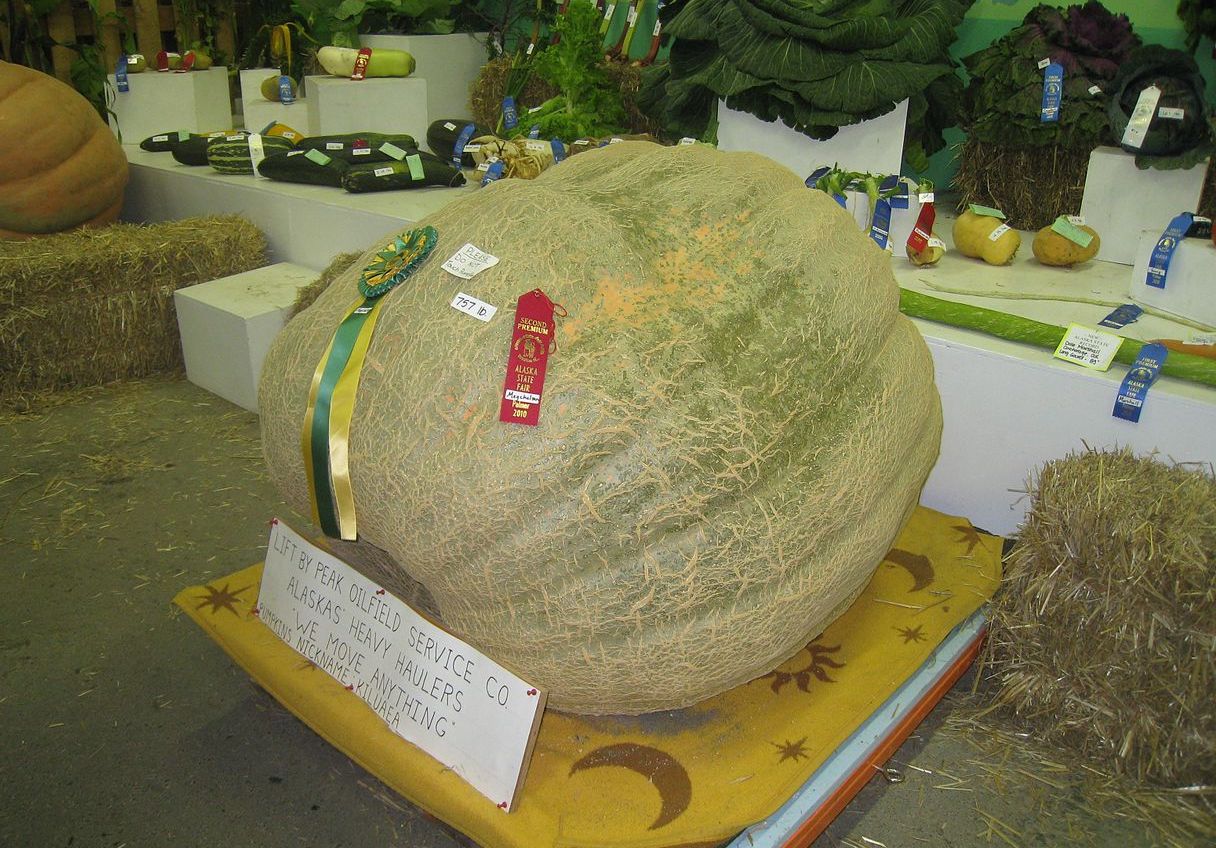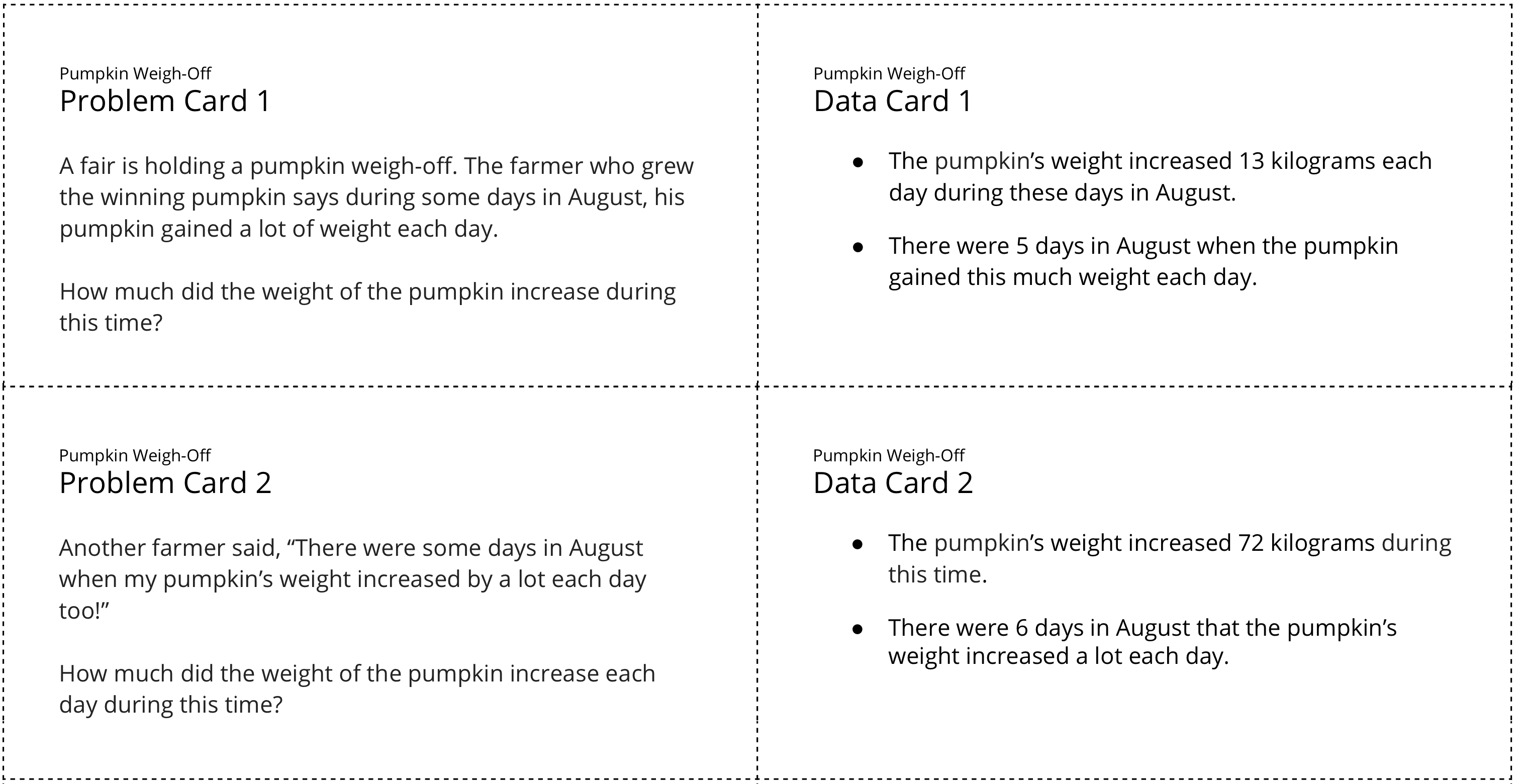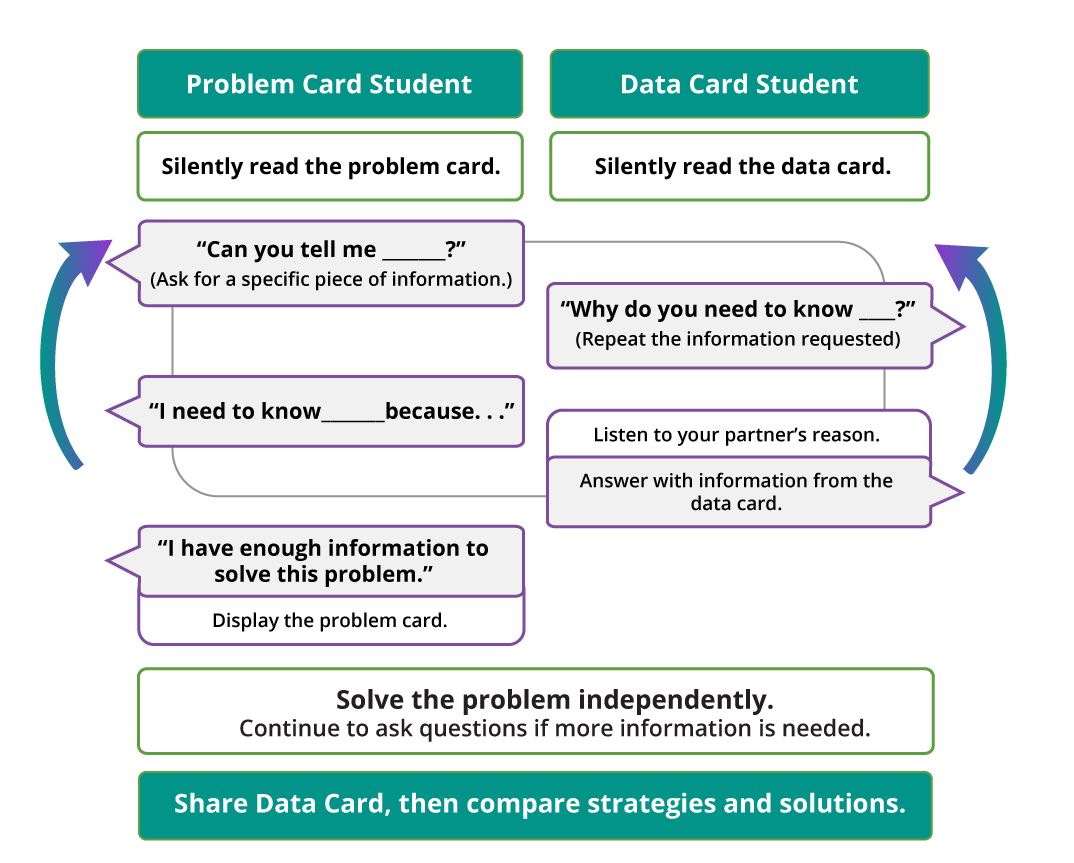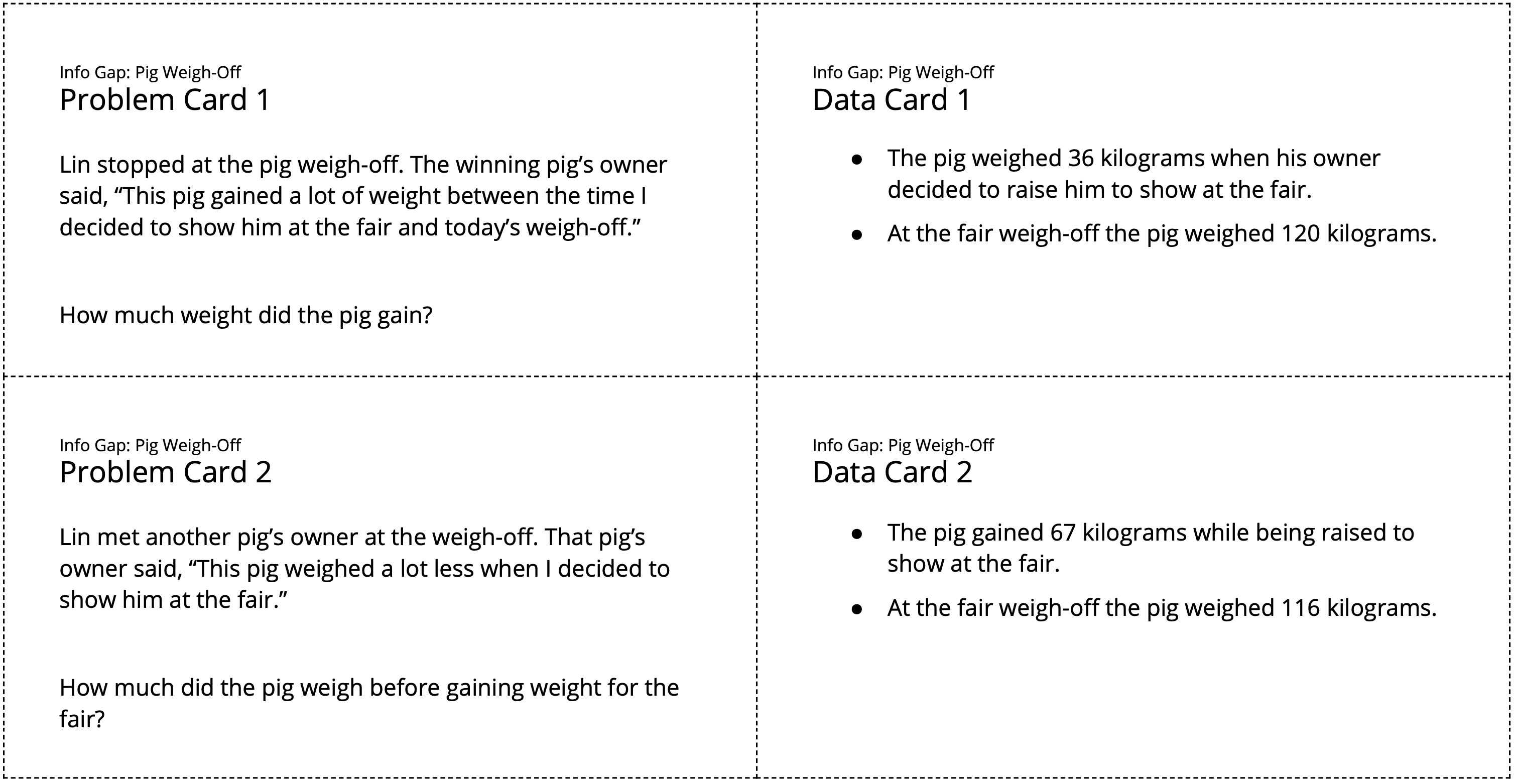Lesson 13
Problems with Missing Information
Warm-up: Estimation Exploration: Giant Cantaloupe (10 minutes)
Narrative
Launch
- Groups of 2
- Display the image.
- “What is an estimate that’s too high? Too low? About right?”
- 1 minute: quiet think time
Activity
- “Discuss your thinking with your partner.”
- 1 minute: partner discussion
- Record responses.
Student Facing
A regular cantaloupe weighs between 1 and 5 kilograms.

This cantaloupe melon was a winner at the 2010 Alaska State Fair. How many kilograms do you think it weighs?

Record an estimate that is:
| too low | about right | too high |
|---|---|---|
| \(\phantom{\hspace{2.5cm} \\ \hspace{2.5cm}}\) | \(\phantom{\hspace{2.5cm} \\ \hspace{2.5cm}}\) | \(\phantom{\hspace{2.5cm} \\ \hspace{2.5cm}}\) |
Student Response
For access, consult one of our IM Certified Partners.
Activity Synthesis
- “How did you use the image or what you know about cantaloupe or other melons to help you make estimates?”
- Consider asking:
- “Is anyone’s estimate less than 100 kilograms? Is anyone’s estimate greater than 500 kilograms?”
- “Based on this discussion, does anyone want to revise their estimate?”
- Consider revealing that the actual weight of the giant cantaloupe is 344 kilograms.
Activity 1: Info Gap: Pumpkin Weigh-Off (20 minutes)
Narrative
This activity uses MLR4 Information Gap.
The Info Gap structure requires students to make sense of problems by determining what information is necessary, and then to ask for information they need to solve it. This may take several rounds of discussion if their first requests do not yield the information they need (MP1). It also allows them to refine the language they use and ask increasingly more precise questions until they get the information they need (MP6). This Info Gap activity provides students an opportunity to solve multiplication and division problems involving weight.
Here is an image of the cards for reference:

Supports accessibility for: Conceptual Processing
Required Materials
Materials to Copy
- Info Gap Pumpkin Weigh-Off Cards
Required Preparation
- Create a set of cards from the blackline master for each group of 2.
- Keep set 1 separate from set 2.
Launch
- Groups of 2
- Display the task statement, which shows a diagram of the info gap structure.
- 1–2 minutes: quiet think time
- Read the steps of the routine aloud.
- “I will give you either a problem card or a data card. Silently read your card. Do not read or show your card to your partner.”
- Distribute cards.
- 1–2 minutes: quiet think time
- Remind students that after the person with the problem card asks for a piece of information the person with the data card should respond with “Why do you need to know (restate the information requested)?”
Activity
- 3–5 minutes: partner work time
- After students solve the first problem, distribute the next set of cards. Students switch roles and repeat the process with Problem Card 2 and Data Card 2.
Student Facing

Pause here so your teacher can review your work.
Ask your teacher for a new set of cards and repeat the activity, trading roles with your partner.
Student Response
For access, consult one of our IM Certified Partners.
Activity Synthesis
- “What parts of the problem helped you make sense of the situation?”
- “Which quantities were important?”
- “Did anyone solve the problem in a different way than their partner?”
Activity 2: Info Gap: Pig Weigh-Off (20 minutes)
Narrative
This activity uses MLR4 Information Gap.
In this activity, students solve addition and subtraction problems involving weight. Here is an image of the cards for reference:

Required Materials
Materials to Copy
- Info Gap: Pig Weigh-Off
Required Preparation
- Create a set of cards from the blackline master for each group of 2.
- Keep set 1 separate from set 2.
Launch
- Groups of 2
- “Let’s use the same information gap routine to solve new problems about another weigh-off.”
- “I will give you either a problem card or a data card. Silently read your card. Do not read or show your card to your partner.”
- Distribute cards.
- 1–2 minutes: quiet think time
- Remind students that after the person with the problem card asks for a piece of information the person with the data card should respond with “Why do you need to know (restate the information requested)?”
Activity
- 3–5 minutes: partner work time
- After students solve the first problem, distribute the next set of cards. Students switch roles and repeat the process with Problem Card 2 and Data Card 2.
Student Facing
Your teacher will give you a new problem card or data card. Do not show or read your card to your partner.
Use the same information gap routine to solve the problem. Then, pause so your teacher can review your work.
Ask your teacher for a new set of cards and repeat the activity, trading roles with your partner.
Student Response
For access, consult one of our IM Certified Partners.
Activity Synthesis
- “What kinds of questions were the most useful to ask?”
- “Were there any questions you weren't sure how to answer?”
- “How did you represent your reasoning once you realized you needed to add (or subtract)?”
Lesson Synthesis
Lesson Synthesis
Cool-down: Winner, Winner (5 minutes)
Cool-Down
For access, consult one of our IM Certified Partners.